Home / Blog / Web Content / How to Create a Nonprofit Case Study [Template & Examples]


How to Create a Nonprofit Case Study [Template & Examples]
Show your impact. Show supporters how you help. Let supporters know how their donations and volunteer hours are making a difference. I know you’ve heard all of this a million times. And a nonprofit case study is one way to actually do it.
What Is a Nonprofit Case Study?
Similarly to your run-of-the-mill business or research case study, a nonprofit case study digs into a challenge and offers insight (most often in the form of data and analysis of that data) on how and why it has since improved based on specific things that your organization has done.
For example, a leadership-building nonprofit might create a case study around a leadership summer camp they offer and how those young leaders went on to improve the community because of the knowledge and skills they learned at camp.
They might even focus on a specific student that went through that program. If you decide to zoom in on one individual’s story for your case study, check out our post on case stories to get advice geared toward that specific approach.
Creating a Case Study
To create a nonprofit case study, you’ll need access to data surrounding your chosen issue and subject. That could include both outside resources from your community, like research studies or reports from other organizations, as well as your internal program or survey data.
If you don’t have the necessary knowledge or experience of the topic you’ve chosen for the nonprofit case study, plan to chat with someone who does and pick their brain about the topic and potential areas or clients to explore. Teamwork makes the dream work.
Choose a Subject
The goal of most nonprofit case studies is to demonstrate your impact. Think of your mission and vision.
- What progress have you made toward it?
- What program or service best demonstrates that progress?
- Is there a specific area or case that’s an exceptional example?
- Are there big picture statistics on your Impact page that you can dig into?
As you’re considering a topic, available data should play a role. Do you have the numbers to back your claims of an impact? Supporters will easily see through the holes in a case study that’s not backed by credible data. Case studies allow you to focus on the “show, don’t tell” approach and a lack of data will leave your argument and claims of an impact pretty flimsy.
Gather Data
Noting that you can access data is often easier than actually tracking down the numbers that you need. Circle up with team members involved in program and service logistics to find and understand the numbers for your case study topic.
This will likely also include some outside research on your part. Bring in data from reputable outside organizations to paint a background picture of the overall issue and challenge that your nonprofit faces. Going back to the leadership camp example, they might bring in statistics or studies about at-risk youth and the positive effects of mentoring.
Nonprofit Case Study Template
As you’re drafting your first nonprofit case study, a template can help you frame the study in an easy-to-digest way. While you might decide to make a few tweaks as you go, we’ve found this template to be a great foundation.
Provide Background Information
Paint a picture of your work and the community you work with.
- What are your organization’s mission and vision?
- Who do you serve? Why do they need help?
- What does the program or service in question do?
- Is there any other background information that would be helpful?
Detail the Challenge
Explain the issues that were faced from the outset of the project, program or service.
Explain Your Actions
- What specific actions did you take? Be sure to note why.
- How did you overcome the challenges you noted above?
- How do your actions work toward your mission and vision?
Note Positive Outcomes
Dive into the impact of your actions now that your readers and supporters have a solid understanding of the situation.
- How did the actions you took work to improve the previous state of your community?
- How has the future improved for your study subjects?
- Which elements of the program/service/project went well? How so?
Key Takeaways
- What did you learn?
- What surprised you about the results?
- What do your results say about the larger challenge/issue at hand?
Wrap up your nonprofit case study with a brief summary of the impact your organization achieved and any next steps for the program or service to work toward expanding that impact. This is also a great place to include a strong call to action to let readers know how they can help — whether that’s through donations, volunteering, spreading awareness or another action.
Examples of Nonprofit Case Studies
Before you jump into creating one of your own, check out a few other organizations who’ve done it well.

Habitat for Humanity East Bay/Silicon Valley, Social Impact Study
Habitat for Humanity East Bay/Silicon Valley created a social impact study to show the continual impact of a new home on their past clients’ lives. Using a survey conducted by a third party, they demonstrated health benefits, increased savings and higher graduation rates for kids.

Yellowstone to Yukon Conservation Initiative, Why Y2Y
Not all case studies are necessarily labeled as such. Yellowstone to Yukon Conservation Initiative uses the grizzly bear population as an indication for the health of natural land. On their “Why Y2Y” page , they laid out their challenge and solution in a compelling call to action to support their cause. To keep the study succinct, they link other pages on their site for additional information.

Rainforest Alliance, Community Forestry Studies
Rainforest Alliance conducted ten case studies , each in a different community and location, to show how their community-central model of forestry conservation can benefit both the communities and the forests. They end the page with a strong call to donate to help protect forests.
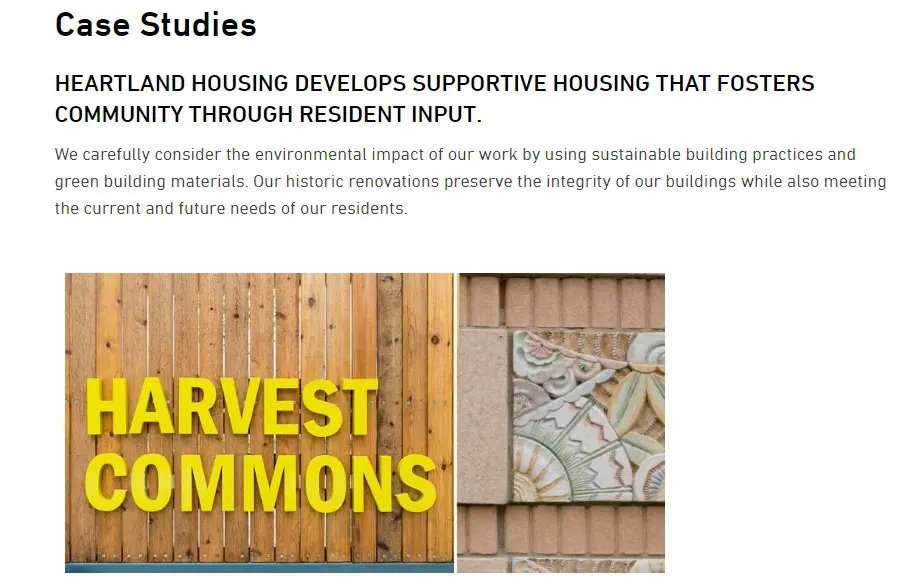
Heartland Alliance, Housing Case Studies
Through their housing development projects, Heartland Alliance Housing claims a comprehensive approach through partnerships with residents and the community. And with their Housing Case Studies , they’re able to actually show how those partnerships and considerations of a sustainable future benefit everyone.
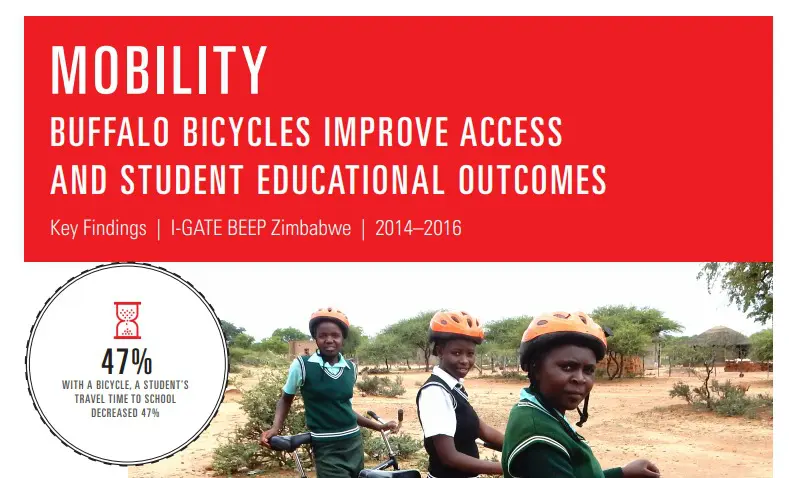
World Bicycle Relief, Key Findings
World Bicycle Relief dug into one of their programs to demonstrate their overall impact on improving access to education in developing countries. This case study on their Improving Girls’ Access through Transforming Education program clearly outlines the need, opportunity and impact, wrapping up with a push to support their overall organization.
Nonprofit case studies are a great tool for fundraising communications, annual reports, impact pages and awareness building. Once you put in the work to create one, you can use it in both online and print communications to encourage old and new supporters to become more involved with your organization.
Case studies allow you to back up your ask with real impact that you’ve accomplished.
Does your nonprofit have a compelling case study you’d like to share? How do you use it to move your marketing forward? I’d love to hear more and swap case studies in the comments.
You might also be interested in
21 examples of nonprofit websites with amazing content, case stories: how to create and use them in nonprofit marketing, 8 inspiring examples of nonprofit impact pages.
Very useful and interesting. Thank you
You are very welcome, Carmen. I’m glad you found it useful!
This is very helpful, I wish I could have someone for one on one help with writing one with such a passion!!!!!!
I’m so happy to hear that you found the post helpful, Celen! Let me know what questions come up as you piece together your case study. It can be tough to get started and track down the data you need, but we’ve seen organizations get some incredible results from showing off their impact in this way.
What are you looking for?
Latest at Reach
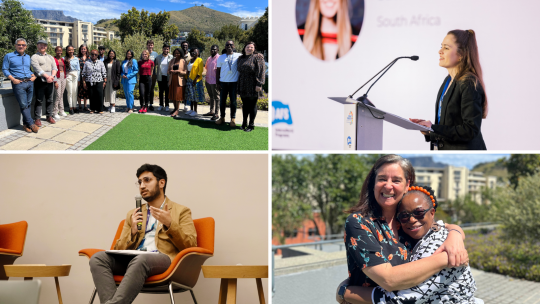
Catalyzing Changemakers at the University of Cape Town
The reach alliance.
Munk School of Global Affairs & Public Policy at the University of Toronto
1 Devonshire Place, Toronto, Ontario, M5S 3K7 Canada
General Inquiries
reachalliance.munk@utoronto.ca
Case Studies
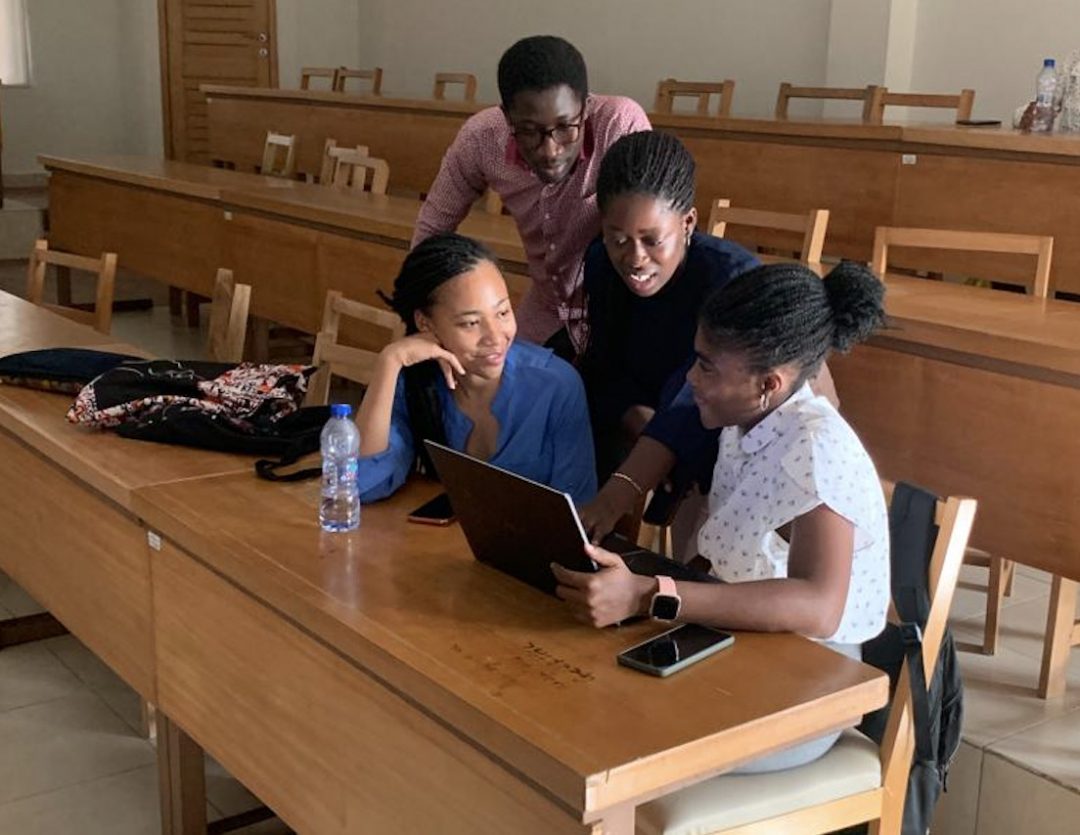
The Reach Alliance is committed to being a prominent hub of inclusive knowledge production. We prioritize knowledge, knowers, and ways of knowing that have been traditionally disengaged and marginalized from ‘legitimate’ academic knowledge. We work with research collaborators to share findings with the global insight community, project implementers, those that contributed to the research, and those that can benefit from the research directly. We do so in ways that amplify the perspectives of those who have historically been left out or silenced in these discussions.

Academic Partner
Research Status
Research year.
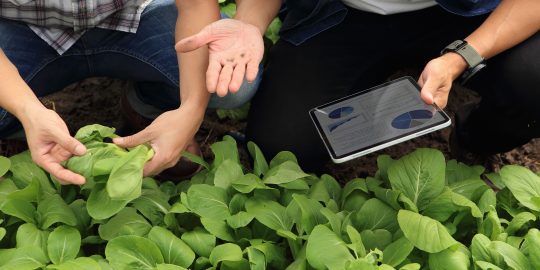
Case Study India
Cutting Through the Grass Ceiling: Supporting Women Smallholder Farmers with the Collective Power of Community, Participatory Learning, and Trust
SDG 1 SDG 3 SDG 5 SDG 13

Case Study Rwanda
Increasing Meaningful Financial Inclusion in Rwanda: Community-Based Savings and Credit Co-operative Societies
SDG 10 SDG 1 SDG 8

Case Study Mexico
The “Kolombia Regia”: Social Vindication in the Face of Stigma and Violence in Monterrey
SDG 1 SDG 10 SDG 16 SDG 5
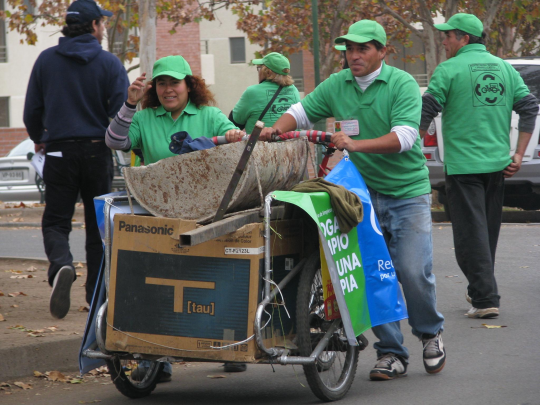
Case Study Chile
Empowering Chile’s Grassroots Recyclers: The Conecta, Recicla y Colabora Initiative
SDG 12 SDG 11 SDG 1 SDG 8
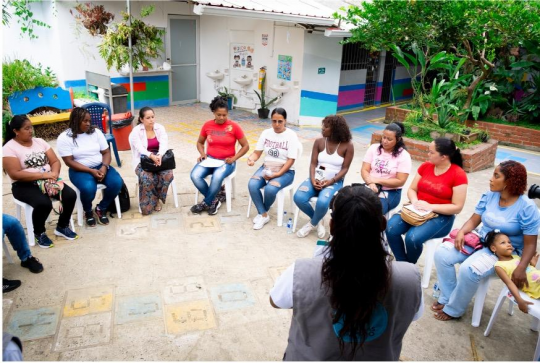
Case Study Colombia
Semillas de Apego: Nurturing Resilience in Colombia’s Youngest Amid Conflict and Displacement
SDG 11 SDG 16 SDG 1 SDG 3

Struggle and Resilience of Migrant Indigenous Communities in Irregular Settlements in Mexico
SDG 1 SDG 8 SDG 10 SDG 11
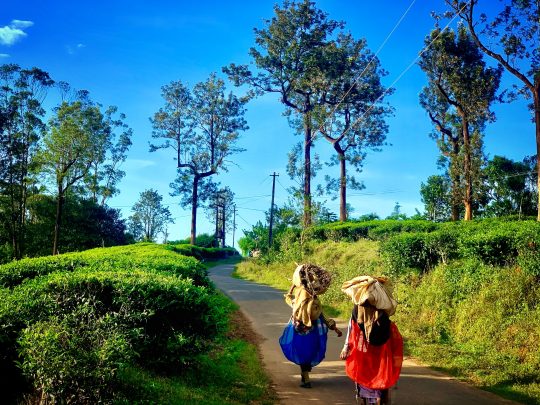
Expanding Access to Justice Through Community-Based Paralegals in New Delhi and Assam
SDG 1 SDG 5 SDG 8 SDG 10 SDG 16

Case Study Thailand
M Fund – a migrant micro insurance program
SDG 1 SDG 3 SDG 10
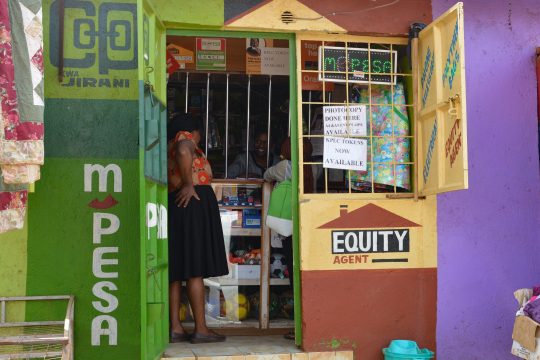
Case Study Kenya
Left Behind: The Socioeconomic Barriers to Last-Mile Mobile Money Access in Kenya
SDG 1 SDG 8 SDG 10
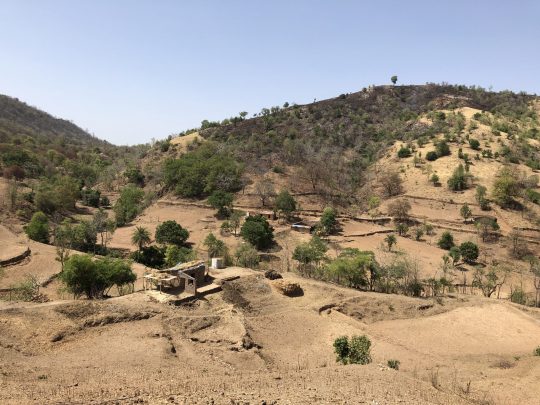
Providing Urban Amenities to Rural Areas: Addressing Rural Poverty in India
SDG 1 SDG 10
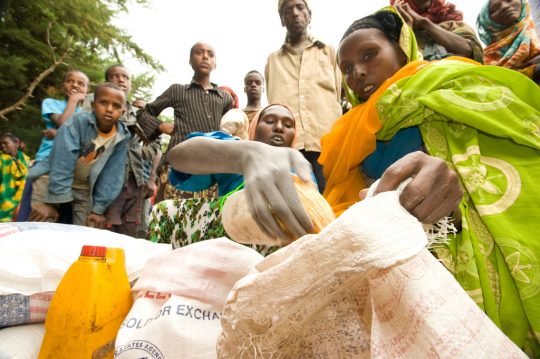
Case Study Ethiopia
Ethiopia’s Productive Safety Net Programme: Addressing Food Insecurity with Food and Cash Transfers
SDG 1 SDG 2 SDG 10
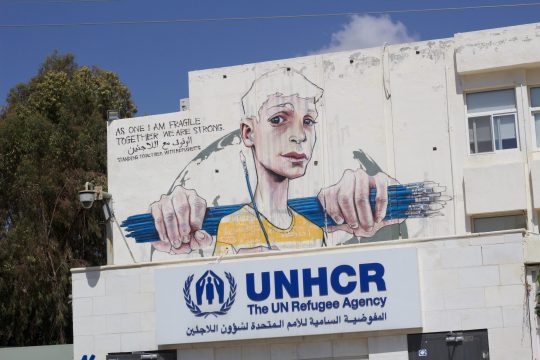
Case Study Jordan
UNHCR Jordan’s Biometric Cash Assistance Program for Syrian Refugees
NGO Case Studies.
“NGO case studies illuminate the power of compassion and innovation, revealing the profound impact of dedicated organizations on the lives they touch, inspiring a world of positive change.”
Dear Readers………..
Non-Governmental Organizations (NGOs) have been at the forefront of driving social, environmental, and humanitarian change across the globe. Through their dedicated efforts, these organizations have touched countless lives, leaving behind a legacy of transformation and hope. In this article, we will delve into several case studies that exemplify the diverse and profound impact of NGOs in addressing critical issues, fostering sustainable development, and empowering communities.
1. Case Study: The Hunger Project — Empowering Women in Rural India:
The Hunger Project, operating in rural India, focuses on empowering women to combat hunger and poverty. Through skill-building programs, microfinance initiatives, and leadership training, the NGO has transformed the lives of thousands of women. By fostering women’s leadership and decision-making roles in local governance, The Hunger Project has catalyzed positive change at the grassroots level, leading to improved access to education, healthcare, and economic opportunities.
The Hunger Project, an international NGO, has been actively working in rural India to address issues of hunger, poverty, and gender inequality. By focusing on empowering women, the organization aims to transform communities and foster sustainable development. This case study sheds light on the transformative initiatives undertaken by The Hunger Project in rural India, highlighting their approach, impact, and lessons learned in empowering women and promoting social progress.
Context and Challenges:
In rural India, women face numerous challenges, including limited access to education, healthcare, and economic opportunities. Deep-rooted gender norms and societal expectations often hinder their participation in decision-making processes and community leadership. Poverty, inadequate infrastructure, and prevailing patriarchal attitudes compound the difficulties faced by women in these regions. The Hunger Project recognized the urgent need to address these issues and create opportunities for women to thrive and lead change.
Approach and Strategies:
The Hunger Project’s approach to empowering women in rural India is multifaceted and community-driven. Rather than imposing external solutions, the organization works closely with local communities, fostering ownership and sustainability. Some key strategies include:
1. Women’s Leadership Development: The Hunger Project believes that empowering women as leaders is crucial for sustainable development. They conduct leadership development programs to equip women with essential skills, build confidence, and encourage them to take on leadership roles in their communities.
2. Microfinance and Income Generation: To enhance women’s economic empowerment, The Hunger Project provides access to microfinance and entrepreneurial training. This empowers women to start and expand their businesses, improving their families’ financial well-being.
3. Education and Healthcare: Recognizing the importance of education and healthcare in women’s empowerment, the NGO supports initiatives to improve access to quality education and healthcare services for women and girls in rural areas.
4. Advocacy and Gender Sensitization: The Hunger Project conducts advocacy campaigns to challenge harmful gender norms and raise awareness about women’s rights. They engage with communities and stakeholders to promote gender equality and combat gender-based violence.
Impact and Outcomes:
The impact of The Hunger Project’s initiatives has been significant, bringing about positive change in the lives of women and communities in rural India. Several key outcomes include:
1. Increased Women’s Participation: Women’s participation in community decision-making has significantly improved, with more women taking on leadership roles in local governance and development initiatives.
2. Economic Empowerment: Through microfinance and income generation programs, many women have gained financial independence, contributing to poverty reduction and improved livelihoods.
3. Education and Healthcare Access: The Hunger Project’s efforts have led to increased school enrollment for girls and improved healthcare access for women and children, resulting in better health outcomes.
4. Shift in Gender Norms: By challenging traditional gender norms and promoting gender equality, The Hunger Project has fostered an environment where women are seen as equal partners in community development.
Lessons Learned:
The case study of The Hunger Project’s work in rural India provides valuable lessons for empowering women and promoting sustainable development:
1. Community-Led Approach: Working in close partnership with communities fosters ownership and ensures sustainability of initiatives.
2. Holistic Interventions: Addressing multiple aspects of women’s empowerment, such as education, healthcare, and economic opportunities, creates a more comprehensive and lasting impact.
3. Women’s Leadership: Empowering women as leaders is instrumental in driving social change and promoting gender equality.
4. Advocacy and Awareness: Advocacy and gender sensitization are essential to challenge deeply ingrained gender norms and create a supportive environment for women’s empowerment
The Hunger Project’s case study on empowering women in rural India exemplifies the potential of NGOs in driving transformative change. By focusing on women’s leadership, economic empowerment, education, and healthcare, the organization has made significant strides in fostering gender equality and sustainable development. The lessons learned from this case study can serve as valuable insights for similar initiatives, highlighting the importance of community-led approaches and holistic interventions in empowering women and creating inclusive societies.
2. Case Study: Save the Children — Rescuing Child Soldiers in Africa:
Save the Children, an international NGO, has played a pivotal role in rescuing and rehabilitating child soldiers in conflict-ridden regions of Africa. By establishing safe spaces, providing trauma counseling, and offering educational opportunities, the organization has given these children a chance at a brighter future. Through its advocacy efforts, Save the Children has also influenced policy changes and international cooperation to protect the rights of children affected by armed conflicts.
3. Case Study: Greenpeace — Fighting for Environmental Conservation:
Greenpeace, known for its environmental activism, has spearheaded campaigns to protect ecosystems and combat climate change. In a landmark case study, the NGO campaigned against illegal logging in the Amazon rainforest, resulting in significant reductions in deforestation rates and the establishment of protected areas. Greenpeace’s grassroots mobilization and innovative advocacy strategies have catalyzed global conversations on environmental conservation.
4. Case Study: BRAC — Empowering Communities in Bangladesh:
BRAC, one of the world’s largest NGOs, has been instrumental in empowering communities in Bangladesh. Through its innovative approach to community development, BRAC has made substantial progress in areas such as education, healthcare, and women’s empowerment. In a notable case study, BRAC’s non-formal primary schools have improved access to education for millions of children, especially girls, breaking barriers to learning in remote and underserved regions.
5. Case Study: Médecins Sans Frontières (Doctors Without Borders) — Providing Medical Aid in Crisis Zones:
Médecins Sans Frontières (MSF) has gained worldwide recognition for providing medical aid in crisis zones and areas affected by conflict and natural disasters. A notable case study highlights MSF’s response to the Ebola outbreak in West Africa. The organization’s swift and comprehensive medical intervention saved countless lives and showcased the crucial role NGOs play in humanitarian emergencies.
6. Case Study: Oxfam — Combating Gender Inequality in Developing Nations :
Oxfam, a prominent NGO fighting global poverty, has consistently worked towards combatting gender inequality. In a case study from Bolivia, Oxfam supported women in rural communities by providing training in agricultural techniques and facilitating access to markets. This empowered women to become economically independent, resulting in increased household income and enhanced gender equality within their communities.
7. Case Study: Ashoka — Nurturing Social Entrepreneurs:
Ashoka, a pioneer in the field of social entrepreneurship, identifies and supports changemakers who drive innovative solutions to societal challenges. Through their case study on the organization’s efforts in Africa, Ashoka showcased the transformative power of social entrepreneurs in improving access to education, healthcare, and sustainable livelihoods.
The case studies presented above offer a glimpse into the profound impact of NGOs in diverse areas of social, environmental, and humanitarian development. These organizations demonstrate the essence of change, embodying compassion, innovation, and dedication in their pursuit of a better world. From empowering women in rural India to rescuing child soldiers in Africa and advocating for environmental conservation worldwide, NGOs continue to be powerful catalysts of progress and hope. As we celebrate these inspiring examples, we are reminded of the incredible potential and collective responsibility to support and collaborate with NGOs in their mission to create a more equitable and sustainable future for all.
Written by Pankaj Exe
Text to speech
- Get started
Success stories
Discover how organizations around the world have expanded their reach and gained more supporters with help from Google for Nonprofits.
Action Against Hunger
Action Against Hunger uses Google tools to easily collaborate across the globe and garner lifesaving donations.
Anaheim Ballet
YouTube’s global community has allowed Anaheim Ballet to reach millions of viewers without leaving the stage.
Canada Learning Code
Canada Learning Code moves programs online with help from Google for Nonprofits
Charity: Water
Social, analytic, and optimization tools from Google are helping charity:water educate supporters and share its message.
Crime Victims Treatment Center
With Google for Nonprofits, the CVTC keeps sensitive information safe and organized, while simplifying operations.
Direct Relief
Direct Relief is using Google tools to reach more supporters, remove barriers to giving, and visualize its impact.
With help from Google tools, FoodFinder connects people to food resources around the United States
Fundación Todo Mejora
Fundación Todo Mejora uses Google Ad Grants to intervene during moments of crisis for LGBT youth across Chile.
Girl Scouts of Japan
Girl Scouts of Japan use Google tools to support programs, secure their data, and empower girls and young women around the country.
GoVolunteer
Google for Nonprofits has helped GoVolunteer to transform the project of a group of friends into a start-up nonprofit.
Jane Goodall Institute
JGI uses Google Earth tools to capture, visualize, and share information about forest loss with the world.
Kiva uses YouTube to activate their community by encouraging fellows, volunteers, and users to share their stories.
Natural Resources Defense Council
The NRDC uses Google tools to communicate effectively, understand their data, and drive more traffic to their website.
Navigators USA
With Google Workspace, Navigators can coordinate with a large network of volunteers and parents around the country.
Nuru International
Google Workspace helps Nuru be more effective and efficient in their day-to-day operations across 11 different time zones.
re:imagine/ATL
With the help of Google tools, re:imagine/ATL gives a new chance to opportunity youth in metro Atlanta.
Royal National Lifeboat Institution
RNLI is using Google tools to create awareness, recruit new supporters, and better understand their website visitors.
Special Olympics World Games
Special Olympics used Google Workspace to coordinate volunteers and Ad Grants to engage viewers during the 2015 World Games.
Chief Almir and the Surui tribe of the Amazon
The Surui tribe has used Google Earth and Open Data Kit to record instances of illegal logging in their tribal lands.
Switchboard LGBT+ Helpline
Switchboard is a volunteer-led organization using Google tools to offer high-quality, reliable services to the LGBT+ community.
Thrive DC uses Google for Nonprofits to get the work done faster and spend more time serving the community.
Van Gogh Museum
The Van Gogh Museum uses YouTube and Ad Grants effectively to reach new museum visitors and raise awareness.
WaterAid uses Google tools to create more engaging and interactive content, resulting in deeper connections with donors.
To distribute compelling content and streamline day-to-day operations, WITNESS relies on no-charge tools from Google.
Going to Scale: A Case Study of an Indian Educational NGO
- Original Paper
- Published: 13 February 2019
- Volume 30 , pages 1365–1379, ( 2019 )
Cite this article

- Panchali Guha ORCID: orcid.org/0000-0001-8030-7798 1
964 Accesses
7 Citations
Explore all metrics
Effective programmes introduced by NGOs in developing countries have the potential to benefit a large number of people if they are scaled up, but instances of successful scaling-up are relatively rare. This paper uses a case study of an Indian educational NGO that has scaled up rapidly and effectively in order to explore the reasons for choice of scaling-up strategy, the particular barriers to scaling-up in the education sector, and how these barriers can be overcome. It finds that, while a high-functioning NGO can successfully overcome many of the internal organisational challenges posed by scaling-up, external barriers such as the difficulty of building relationships with key stakeholders like government officials and school teachers pose significant challenges. While these difficulties could in principle be mitigated by moving from an expansion-based to collaboration-based model of scaling-up, low accountability and governance of the NGO sector make it difficult to detect the quality of potential partners. The case also shows that India’s recent law mandating CSR has increased funding availability for scaling-up, but its requirement for corporate donors to preferentially support local projects has also created some challenges by constraining NGO ability to harness economies of scale during scaling.
This is a preview of subscription content, log in via an institution to check access.
Access this article
Price includes VAT (Russian Federation)
Instant access to the full article PDF.
Rent this article via DeepDyve
Institutional subscriptions

Similar content being viewed by others

Inclusive education: Developments and challenges in South Africa
Understanding sustainable development goal (sdg) 4 on “quality education” from micro, meso and macro perspectives.

Research on Digital Transformation in Higher Education: Present Concerns and Future Endeavours
See http://www.mca.gov.in/Ministry/pdf/CompaniesAct2013.pdf .
Section 1 35 of the Companies Act 2013 states that “the company shall give preference to the local area and areas around it where it operates, for spending the amount earmarked for Corporate Social Responsibility activities”.
Abbey, E. M. (2008). Constructive regulation of non-government organizations. The Quarterly Review of Economics and Finance, 48 (2), 370–376.
Google Scholar
Afsharipour, A., & Rana, S. (2014). The emergence of new corporate social responsibility regimes in China and India . UC Davis Legal Studies Research Paper 386 . Davis: University of California.
Ahmad, M. M. (2003). Whose ideas? Field workers’ views on non-governmental organisations’ policies in Bangladesh. International Development Planning Review, 25 (1), 67–84.
Ahmed, M. (2000). Promoting public-private partnership in health and education: The case of Bangladesh. In Y. Wang (Ed.), Public - private partnerships in the social sector: Issues and country experiences in Asia and the Pacific (p. 219–291). Retrieved from https://www.adb.org/sites/default/files/publication/159396/adbi-ppp-social-sector-issues-country-experiences-asia-pacific.pdf
Ambegaokar, M., & Lush, L. (2004). Family planning and sexual health organizations: Management lessons for health system reform. Health Policy and Planning, 19 (Suppl. 1), i22–i30.
Annual Status of Education Report (ASER) (Rural) (2016). New Delhi: ASER Centre. Retrieved from http://img.asercentre.org/docs/Publications/ASER%20Reports/ASER%202016/aser_2016.pdf
Banks, N., & Hulme, D. (2012). The role of NGOs and civil society in development and poverty reduction . Brooks World Poverty Institute Working Paper 171.
Banks, N., Hulme, D., & Edwards, M. (2015). NGOs, states, and donors revisited: Still too close for comfort? World Development, 66, 707–718.
Barr, A., Fafchamps, M., & Owens, T. (2005). The governance of non-governmental organizations in Uganda. World Development, 33 (4), 657–679.
Batley, R. (2006). Engaged or divorced? Cross-service findings on government relations with non-state service-providers. Public Administration and Development, 26 (3), 241–251.
Bebbington, A. (1997). New states, new NGOs? Crises and transitions among rural development NGOs in the Andean region. World Development, 25 (11), 1755–1765.
Benz, M. (2005). Not for the profit, but for the satisfaction? Evidence on worker well-being in non-profit firms. Kyklos, 58 (2), 155–176.
Bhattacharya, D. (2018, October 26). FCRA licences of 20,000 NGOs cancelled: Act being used as weapon to silence organisations. Firstpost . Retrieved from https://www.firstpost.com/india/fcra-licences-of-20000-ngos-cancelled-act-being-used-as-weapon-to-silence-organisations-3181560.html
Billis, D., & MacKeith, J. (1992). Growth and change in NGOs: Concepts and comparative experience. In M. Edwards & D. Hulme (Eds.), Making a difference: NGOs and development in a changing world . UK: Earthscan Publications.
Binswanger, H. P. (2000). Scaling up HIV/AIDS programs to national coverage. Science, 288 (5474), 2173–2176.
Binswanger, H., & Aiyar, S. S. (2003). Scaling up community - driven development: Theoretical underpinnings and program design implications . Policy Research Working Paper no. 3039. Washington, DC: World Bank. Retrieved from https://openknowledge.worldbank.org/handle/10986/18310
Bold, T., Kimenyi, M., Mwabu. G., Ng’ang’a, A., & Sandefur, J. (2013). Scaling up what works: Experimental evidence on external validity in Kenyan education. Center for Global Development Working Paper 321. Retrieved from https://www.cgdev.org/sites/default/files/Sandefur-et al-Scaling-Up-What-Works.pdf
Bornstein, E., & Sharma, A. (2016). The righteous and the rightful: The technomoral politics of NGOs, social movements, and the state in India. American Ethnologist, 43 (1), 76–90.
Bos, J. W. B., & Millone, M. (2015). Practice what you preach: Microfinance business models and operational efficiency. World Development, 70, 28–42.
Brass, J. N., Longhofer, W., Robinson, R. S., & Schnable, A. (2018). NGOs and international development: A review of thirty-five years of scholarship. World Development, 112, 136–149.
Bryant, R. L. (2002). False prophets? Mutant NGOs and Philippine environmentalism. Society and Natural Resources, 15 (7), 629–639.
Carter, S. E., & Currie-Alder, B. (2006). Scaling-up natural resource management: Insights from research in Latin America. Development in Practice, 16 (2), 128–140.
Cernea, M. M. (1988). Nongovernmental organisations and local development . World Bank Discussion Paper 40. Washington, DC: World Bank. Retrieved from http://documents.worldbank.org/curated/en/723711468739268149/pdf/multi-page.pdf
Chahine, S., & Tannir, L. (2010). On the social and financial effects of the transformation of microfinance NGOs. VOLUNTAS: International Journal of Voluntary and Nonprofit Organizations, 21 (3), 440–461.
Christensen, D., & Weinstein, J. M. (2013). Defunding dissent: Restrictions on aid to NGOs. Journal of Democracy, 24 (2), 77–91.
Confederation of Indian Industry (CII) (2013). Urgent needs of NGOs in the education sector: A report. Retrieved from https://www2.deloitte.com/content/dam/Deloitte/in/Documents/IMO/in-imo-ngo%27s-in-the-education-sector-noexp.pdf
Davis, D. R., Murdie, A., & Steinmetz, C. G. (2012). “Makers and shapers”: Human rights INGOs and public opinion. Human Rights Quarterly, 34 (1), 199–224.
Desai, R. M. (2007). The political economy of poverty reduction: scaling up antipoverty programs in the developing world. Wolfensohn Center for Development Working Paper 2. Retrieved from https://www.brookings.edu/wp-content/uploads/2016/06/11_poverty_desai.pdf
DeStefano, J., & Crouch, L. (2006). Education reform support today. Retrieved from http://pdf.usaid.gov/pdf_docs/Pnadq913.pdf
Dharmapala, D., & Khanna, V. S. (2018). The impact of mandated corporate social responsibility: Evidence from India’s Companies Act of 2013. International Review of law and Economics, 56, 92–104.
Dichter, T. W. (1989). NGOs and the replication trap. Retrieved from http://pdf.usaid.gov/pdf_docs/PNABD656.pdf
Duflo, E. (2004). Scaling up and evaluation. In F. Bourguignon & B. Pleskovic (Eds.), Annual World Bank Conference on Development Economics 2004: Accelerating Development . Washington, DC: World Bank.
Dupuy, K., Ron, J., & Prakash, A. (2016). Hands off my regime! Governments’ restrictions on foreign aid to non-governmental organizations in poor and middle-income countries. World Development, 84, 299–311.
Ebdon, R. (1995). NGO expansion and the fight to reach the poor: Gender implications of NGO scaling-up in Bangladesh. IDS Bulletin, 26 (3), 49–55.
Ebrahim, A. (2003). Making sense of accountability: Conceptual perspectives for northern and southern nonprofits. Nonprofit Management and Leadership, 14 (2), 191–212.
Economic Times (ET) Bureau. (2017). Foreign funding in NGOs down to 36.5% in 2016–2017. Economic Times . Retrieved from https://economictimes.indiatimes.com/elections-home/politics-of-alliances/foreign-funding-in-ngos-down-to-36-5-in-2016-17/articleshow/62215040.cms
Edwards, M. (1999). NGO performance—what breeds success? New evidence from South Asia. World Development, 27 (2), 361–374.
Edwards, M. (2008). Have NGOs ‘made a difference’? From Manchester to Birmingham with an elephant in the room. Global Poverty Research Group. Retrieved from http://www.gprg.org/pubs/workingpapers/pdfs/gprg-wps-028.pdf
Edwards, M., & Fowler, A. (2002). Introduction: Changing challenges for NGO management. In M. Edwards & A. Fowler (Eds.), The Earthscan Reader on NGO Management . UK: Earthscan Publications.
Edwards, M., & Hulme, D. (1992). Scaling up NGO impact on development: Learning from experience. Development in Practice, 2 (2), 77–91.
Edwards, M., & Hulme, D. (1995). NGO performance and accountability in the post-Cold War world. Journal of International Development, 7 (6), 849–856.
Edwards, M., & Hulme, D. (1996). Too close for comfort? The impact of official aid on nongovernmental organizations. World Development, 24 (6), 961–973.
Edwards, M., & Hulme, D. (2002). Making a difference: Scaling-up the development impact of NGOs—concepts and experiences. In M. Edwards & A. Fowler (Eds.), The Earthscan Reader on NGO Management . UK: Earthscan Publications.
ExpandNet (2010) Nine steps for developing a scaling - up strategy. Geneva: World Health Organization. Retrieved from http://www.who.int/immunization/hpv/deliver/nine_steps_for_developing_a_scalingup_strategy_who_2010.pdf
Fyvie, C., & Ager, A. (1999). NGOs and innovation: Organizational characteristics and constraints in development assistance work in the Gambia. World Development, 27 (8), 1383–1395.
Gatti, L., Vishwanath, B., & Seele, P. (2018) Are we moving beyond voluntary CSR? Exploring theoretical and managerial implications of mandatory CSR resulting from the new Indian Companies Act. Journal of Business Ethics, 1–12.
Gibelman, M., & Gelman, S. R. (2001). Very public scandals: Nongovernmental organizations in trouble. VOLUNTAS: International Journal of Voluntary and Nonprofit Organizations, 12 (1), 49–66.
Gillespie, S. (2004). Scaling up community driven development:A synthesis of experience. Washington, DC: IFPRI. Retrieved from http://documents.worldbank.org/curated/en/138591468321296730/pdf/316310Synthesis0CDD0Scaling.pdf
Gond, J., Kang, N., & Moon, J. (2011). The government of self-regulation: On the comparative dynamics of corporate social responsibility. Economy and Society, 40 (4), 640–671.
Gugerty, M. K. (2008). The effectiveness of NGO self-regulation: Theory and evidence from Africa. Public Administration and Development, 28 (2), 105–118.
Guidestar India. (2009). NGO accountability in the Indian context . Retrieved from http://www.guidestarinternational.org/SiteImages/file/NGO%20Accountability%20in%20the%20Indian%20Context.pdf
Hailey, J. (2000). Indicators of identity: NGOs and the strategic imperative of assessing core values. Development in Practice, 10 (3–4), 402–407.
Hailey, J., & James, R. (2004). “Trees die from the top”: International perspectives on NGO leadership development. VOLUNTAS: International Journal of Voluntary and Nonprofit Organizations, 15 (4), 343–353.
Hajer, M., Nilsson, M., Raworth, K., Bakker, P., Berkhout, F., de Boer, Y., et al. (2015). Beyond cockpit-ism: Four insights to enhance the transformative potential of the Sustainable Development Goals. Sustainability, 7 (2), 1651–1660.
Hargittai, E., & Shafer, S. (2006). Differences in actual and perceived online skills: The role of gender. Social Science Quarterly, 87 (2), 432–448.
Hartmann, A., & Linn, J. F. (2008). Scaling up: A framework and lessons for development effectiveness from literature and practice. Wolfensohn Center for Development Working Paper 5. Retrieved from https://www.brookings.edu/wp-content/uploads/2016/06/10_scaling_up_aid_linn.pdf
Heyns, S. (1996). Organisational capacity-building, and the ‘quick and dirty’ consultant. Development in Practice, 6 (1), 54–57.
Hodson, R. (1992). Small, medium or large? The rocky road to NGO growth. In M. Edwards & D. Hulme (Eds.), Making a difference: NGOs and development in a changing world . UK: Earthscan Publications.
Igoe, J. (2003). Scaling up civil society: Donor money, NGOs and the pastoralist land rights movement in Tanzania. Development and Change, 34 (5), 863–885.
Jalali, R. (2008). International funding of NGOs in India: Bringing the state back in. VOLUNTAS: International Journal of Voluntary and Nonprofit Organizations, 19 (2), 161–188.
Jamali, D., & Keshishian, T. (2009). Uneasy alliances: Lessons learnt from partnerships between business and NGOs in the context of CSR. Journal of Business Ethics, 84 (2), 277–295.
Jowett, A., & Dyer, C. (2012). Scaling-up successfully: Pathways to replication for educational NGOs. International Journal of Educational Development, 32, 733–742.
Korten, D. C. (1980). Community organization and rural development: A learning process approach. Public Administration Review, 40 (5), 480–511.
KPMG. (2017). India’s CSR reporting survey 2016 . Retrieved from https://assets.kpmg.com/content/dam/kpmg/in/pdf/2017/02/CSR-Survey-2016.pdf
Lewis, D. (2001). The management of non-governmental development organizations: An introduction . London: Routledge.
Lewis, D. (2003). Theorizing the organization and management of non-governmental development organizations: Towards a composite approach. Public Management Review, 5 (3), 325–344.
Lewis, D., & Opoku-Mensah, P. (2006). Moving forward research agendas on international NGOs: Theory, agency and context. Journal of International Development, 18 (5), 665–675.
Lister, S. (2001). ‘Scaling-up in emergencies: British NGOs after Hurricane Mitch. Disasters, 25 (1), 36–47.
Lloyd, R. (2005). The role of NGO self - regulation in increasing stakeholder accountability. One World Trust. Retrieved from http://coddeconduitaong.ro/wordpress/wp-content/uploads/2011/08/The_Role_of_NGO_Self-Regulation_in_Increasing_Stakeholder_-Accountability.pdf
Lovell, C., Mandondo, A., & Moriarty, P. (2002). The question of scale in integrated natural resource management. Conservation Ecology, 5 (2), 25–42.
Mangham, L. J., & Hanson, K. (2010). Scaling up in international health: What are the key issues? Health Policy and Planning, 25 (2), 85–96.
Miraftab, F. (1997). Flirting with the enemy: Challenges faced by NGOs in development and empowerment. Habitat International, 21 (4), 361–375.
Moore, M., & Stewart, S. (1998). Corporate governance for NGOs? Development in Practice, 8 (3), 335–342.
Murdie, A., & Bhasin, T. (2011). Aiding and abetting: Human rights INGOs and domestic protest. The Journal of Conflict Resolution, 55 (2), 163–191.
Outlook. (2015). Open letter to the Prime Minister . Retrieved from https://www.outlookindia.com/website/story/open-letter-to-the-prime-minister/294238
Power, G., Maury, M., & Maury, S. (2002). Operationalising bottom-up learning in international NGOs: Barriers and alternatives. Development in Practice, 12 (3–4), 272–284.
Prakash, A., & Gugerty, M. K. (2010). Trust but verify? Voluntary regulation programs in the nonprofit sector. Regulation and Governance, 4, 22–47.
Samoff, J., Sebatane, E. M., & Dembele, M. (2003). Scaling up by focusing down: Creating space to expand education reform. Biennial Meeting of the Association for the Development of Education in Africa. Arusha, Tanzania, 7–11 October 2001. Retrieved from http://www.rocare.org/SCALE7.pdf
Serra, D., Serneels, P., & Barr, A. (2011). Intrinsic motivations and the non-profit health sector: Evidence from Ethiopia. Personality and Individual Differences, 51 (3), 309–314.
Sidel, M. (2010). The promise and limits of collective action for nonprofit self-regulation: Evidence from Asia. Nonprofit and Voluntary Sector Quarterly, 39 (6), 1039–1056.
Steele, P., Fernando, N., & Weddikara, M. (2008). Overview. In P. Steele, N. Fernando, & M. Weddikara (Eds.), Poverty reduction that works: experience of scaling up development success . UNDP/Earthscan.
Unerman, J., & O’Dwyer, B. (2006). On James Bond and the importance of NGO accountability. Accounting, Auditing & Accountability Journal, 19 (3), 305–318.
United Nations (UN) (2018). Quality education: Why it matters . Retrieved from https://www.un.org/sustainabledevelopment/wp-content/uploads/2018/09/Goal-4.pdf
Uvin, P. (1995). Scaling up the grass roots and scaling down the summit: The relations between third world nongovernmental organisations and the United Nations. Third World Quarterly, 16 (3), 495–512.
Uvin, P., Jain, P. S., & Brown, L. D. (2000). Think large and act small: Toward a new paradigm for NGO scaling up. World Development, 28 (8), 1409–1419.
Uvin, P., & Miller, D. (1994). Scaling up: Thinking through the issues . Retrieved from https://www.globalpolicy.org/component/content/article/177/31630.html
Voluntary Action Network India (VANI). (2013). Status of the voluntary sector in India. Retrieved from http://www.vaniindia.org/Inside%20Pages%20-Status%20Voluntary%20Sector%20dt%2022-6-13.pdf
Werker, E., & Ahmed, F. Z. (2008). What do nongovernmental organizations do? The Journal of Economic Perspectives, 22 (2), 73–92.
Wils, F. (1995). Scaling-up, mainstreaming and accountability: The challenge for NGOs. In M. Edwards, & D. Hulme (eds.) Non - governmental organisations — performance and accountability . Save the Children/Earthscan.
Yin, R. K. (1984). Case study research: Design and methods . Thousand Oaks: Sage Publications.
Download references
Acknowledgements
I am grateful to all the interviewees for their time and to Alfred Wu, Phanish Puranam, and two anonymous reviewers for their comments on an earlier draft.
Author information
Authors and affiliations.
Lee Kuan Yew School of Public Policy, National University of Singapore (NUS), Oei Tiong Ham Building, 469C Bukit Timah Road, Singapore, 259772, Singapore
Panchali Guha
You can also search for this author in PubMed Google Scholar
Corresponding author
Correspondence to Panchali Guha .
Ethics declarations
Conflict of interest.
The author declares that she has no conflict of interest.
Ethical Standards
The author declares that she has complied with ethical standards in the preparation of this research article.
Additional information
Publisher's note.
Springer Nature remains neutral with regard to jurisdictional claims in published maps and institutional affiliations.
Rights and permissions
Reprints and permissions
About this article
Guha, P. Going to Scale: A Case Study of an Indian Educational NGO. Voluntas 30 , 1365–1379 (2019). https://doi.org/10.1007/s11266-019-00099-3
Download citation
Published : 13 February 2019
Issue Date : December 2019
DOI : https://doi.org/10.1007/s11266-019-00099-3
Share this article
Anyone you share the following link with will be able to read this content:
Sorry, a shareable link is not currently available for this article.
Provided by the Springer Nature SharedIt content-sharing initiative
- Corporate social responsibility
- Find a journal
- Publish with us
- Track your research

Case Study: Local NGO Development
The recent focus on local systems strengthening has created an opportunity to witness some encouraging results, especially when it comes to a variety of approaches for increasing local leadership of development activities. LINC has been working with local and international NGOs and donors on a number of new approaches. During our August 2014 trip to Kenya, we saw promising results from one such approach – the management of a local NGO’s own budget for self-improvement.
The trip offered LINC an opportunity to return to an African NGO client, Adeso, only six months after the previous visit and nine months from the start of our work together. The change that occurred within the organization over such a short time period was impressive and was primarily due to senior management buy-in based on the decision to dedicate a portion the organization’s own budget on continuous improvement.

“With the senior management team working together to ensure this investment results in concrete improvements, Adeso has achieved and will continue to achieve significant and sustainable change in a short time-frame.” –Member of Adeso Senior Management Team
When LINC first began speaking with Adeso leadership in October 2013, they had recently experienced a period of tremendous growth, as their annual budget grew five-fold from 2004 to 2013. Management and staff recognized that, while their programs were successful and their methods as an African NGO supporting African communities was solid, they needed to update their structure and systems to meet the needs of a rapidly growing organization.
Based on Adeso’s self-assessment and comparative analysis of peer organizations, LINC and Adeso worked together to design a set of organizational development activities that met key needs and aspirations. These activities were budgeted from Adeso’s administrative funds, rather than from a donor or INGO partner – a commitment that has significantly improved results. From November 2013 through February 2014, LINC supported formation of an internal “Change Management Team,” (CMT) representing every country program and every department, with a mandate from senior management to conduct analysis and gauge the highest priorities of the organization.
During our February visit, we helped the CMT and senior management present the results of the analysis and the setting of prioritized strategic objectives for organizational improvement. From our in-country meetings and workshops, it was clear that staff across the organization were inspired to achieve the Adeso mission and vision, and that they were excited to adjust organizational structure and update systems to meet the challenges of a larger and rapidly growing NGO. Their voice was heard in the process and the changes reflected their requests. The main outputs of the trip were an up-to-date strategic plan, a change management plan, and a set of department operational plans to realize their goals over the course of the next three years.
Not surprisingly, the organization LINC returned to in August – just six months later – felt quite different. The organizational structure had been adjusted, beginning with the senior management team. Mid-level management and staff had already noticed that the new structure allowed for much more responsive decision-making and support. With the changes in structure, people were also beginning to move into positions that better fit their skills and ambitions. Departments were able to update and often simplify their systems and procedures with more input from their internal “customers.”
Adeso is rapidly evolving to a more sustainable entity that is comfortable with its size, allowing them to focus on other strategic topics such as advocacy, program quality, and resource development. The speed and effectiveness of these adjustments were clearly improved due to Adeso’s leadership and staff taking ownership managing their own organizational development.
Learn more about our ADESO project.
- Google Plus
- StumbleUpon

- Publish with us

Publication History
Submitted: February 01, 2024 Accepted: February 13, 2024 Published: February 29, 2024
Identification
Shishir Chandra Paik (2024). NGOs` Partnership for Social Development: A Case Study on an NGO. Dinkum Journal of Social Innovations , 3(02):115-123.
© 2024 DJSI. All rights reserved.
Vol. 3 No. 02 (2024)
NGOs` Partnership for Social Development: A Case Study on an NGO Original Article
Shishir Chandra Paik 1 *
- Lecturer, Government Brojomohun College, Barishal, Bangladesh.
* Correspondence: [email protected]
Abstract: Partnership is a buzzword and it is now being frequently used in different disciplines including development studies. In the NGO sector, this word has got a very good status, where they are now actively engaging in local, regional, national and international issues. Partnership is now an important social mechanism to the individuals, groups, communities and organizations (government or non-government), donors, policy makers. The study looks the importance of partnership in the paradise of NGOs` intervention. The principal objective is to know the nature and types of partnership toward social development which the NGOs are using in Bangladesh. It is based on qualitative study based on an NGO as case study. A number of qualitative data collection methods such as Focus Group Discussion, In-depth Case Study and Documentation Survey. According to the study findings, it reveals that the NGOs` partnership is important for social development but ways and techniques of partnership as well as the benefits of partnership are not achieved accordingly. The study investigated the significance of collaboration within the realm of non-governmental organization (NGO) involvement. In the context of social development, the research issue, the primary goal is to gain an understanding of the nature and forms of partnerships that non-governmental organizations (NGOs) in Bangladesh are employing in order to advance social development. The study has also suggested that nature of partnership with NGO-Donor agencies should be rare focused. It also recommended that partnership with local community is also neglected and it found that the social reality within this partnership process is more crucial. NGOs have to work with local community as well as civil society.
Keywords: NGOs, partnership, social development, Bangladesh
- INTRODUCTION
Partnership is a buzzword and it is now being frequently used in different disciplines including development studies. In the NGO sector, this word has got a very good status, where they are now actively engaging in local, regional, national and international issues [1]. The partnership is one kind of joint venture and joint investment where a number of stakeholders come together with a common interest to achieve the compatible goal though mutual understanding and share which may not possible by alone [2]. Partnership is now an important social mechanism to the individuals, groups, communities and organizations (government or non-government), donors, policy makers. The USAID (1997, P-220) states that partnerships can make it possible to tailor development projects to local needs and concerns, thus leveraging the development expertise and resources [3]. Although the concept of partnership was influenced by ideological notions of international solidarity in the 1970s and 1980s, North-South partnerships are currently seen to enable more efficient use of scarce resources, increased sustainability and improved beneficiary participation in development activities [4]. However, it is thought that the creation of synergy through partnership produces results that partners could not obtain without collaboration. Partnership plays a significant role in sharing resources, works, risks, responsibility, decision-making, benefits and burdens. It is also important for the proper utilization of human resources and to use them achieving something better [5]. Partnership is one kind of relationship between two or more parties, having compatible goals, and a form of agreement to do something together. The critical factors associated with effective partnerships are the development of trust, cooperative interpersonal relationships, and processes which promote communication, mutual influence and joint learning [6]. The term ‘development’ means the positive change of the total societal system and structures which are highly related with the well-being of the population. It is a process of planned social change designed to promote the well-being of the population as a whole in conjunction with a dynamic process of economic development [7]. However, it is needed to have some sorts of mutual and joint activities to achieve such kind of (development) objectives. Within the broad spectrum, the NGOs need to go partnerships such as community, GOs-NGOs, community leaders, civil society, social institutions, and donors. NGOs need partnership for social development for the community because it expands the financial help to every sector of the society [8]. Partnership helps to set-up a good financial help between the NGO authority and the donors. NGOs get their expected helps to operate the new dimension-oriented programs [9]. NGOs expand their new working areas and, in this situation, partnership contribute a lot. Partnership helps the partner NGOs to increase the number of their beneficiaries, to create employment opportunities and to ensure their sustainability [10]. It makes the beneficiaries self-sufficient through meeting their basic needs. Through partnership it is easy to make a good combination among the aims, objectives, goals and procedures of the government and the NGO [11]. It helps to ensure the proper utilization the national wealth of a country and creates the opportunities to participate in the national development program of a country [12]. Partnership helps to participate in the social development process of a society or a particular community. It brings the opportunities to form more partnership on the basis of the current performance. This study determined the NGOs’ partnerships and their contribution for social development in Bangladesh as well as the nature, techniques, and function of NGOs’.
- MATERIALS & METHODS
The research is based on the qualitative research and a number of qualitative data collection methods such as participant observation, in-depth case studies, interview methods, and documentation survey are employed for data collection procedures. Documentation means to survey the documents about the respective fields, it helps to get the secondary data. The collected data will be analyzed through proper triangulation in the thematic approach.
- RESULTS & DISCUSSIONS
3.1 Association for Realization of Basic Needs-ARBAN
Bangladesh was under the hegemony of foreign domination for hundreds of years. She is the youngest war born nation in the South Asian Region. The Association for realization of Basic Needs-ARBAN, a Non Govt. Development Organization, concerned with fundamental rights and the basic needs of the people, was founded on 18th February 1984. ARBAN believes that all development projects and programs designed and implemented by the Government, NGOs, International Organizations, UN bodies and others should be directed towards the fulfillment of the basic needs and fundamental rights of the people who live in perpetual poverty, famine, malnutrition, disease, deprivation, indebtedness, injustice and exploitations. ARBAN envisions a just society based on social justice, human dignity, equity, equality, democratic and secular values free from exploitation, poverty, disparities, misrule, corruption, and gender inequalities leading to freedom and emancipation of disadvantaged powerless people irrespective of caste, creed, and religious beliefs. The broad objective of ARBAN is to arouse and advance awareness and awakening of the poor and powerless people on socio-economic, political, human, women and children’s rights, health, ecology, environment, peace, democracy, governance, and consumer’s issues through dialogical process leading to collective actions for their self-determination.
Table 01: Present Programs/ Projects
| 1 | Counity Development Programme-CDP, Dhaka. | 12 Thanas of Dhaka Metropolis, Fatulla Thana of Narayangonj, Tongi Thana of Gazipur. | CARE Bangladesh, ARBAN own fund & Group Savings |
| 2 | Community Development Programme-CDP, Chittagong. | Dauble Muring and Halishohar Thanas of Chittagong City Corporation. | ARBAN own fund & Group Savings |
| 3 | Community Development Programme-CDP, Cox’s Bazar. | Sadar Upazila of Cox’s Bazar District | ARBAN own fund & Group Savings |
| 4 | Landless Agricultural Workers Union-LAWU | Faridpur, Bhangura & Chatmohar Upazilas of Pabna district, Kazipur Upazila of Sirajgonj district, Sharishabari Upazila of Jamalpur district | CAFOD-UK & ARBAN’s own fund. |
| 5 | Human Economic & Ecological Development-HEEd, Patuakhali | Golachipa and Kalapara Upazilas of Patuakhali district. | Andheri-Hilfe, Germany and ARBAN’s own fund. |
| 6 | Poverty Alleviation Through Social Change (PATSC) and Alternative Lifestyles: Integrated Programme in three Dhaka Slums | School programme in Dhaka, Narayangonj & Gazipur and Teacher’s training throughout Bangladesh | TDH-Italy & European Commission |
| 7 | Forestry Sector Project-FSP. | Faridpur, Bhangura & Chatmohar Upazilas of Pabna district, Kazipur Upazila of Sirajgonj district, | Government of the People’s Republic of Bangladesh-GOB |
| 8 | Housing Project. (Bangladesh Bank) | Golachipa and Kalapara Upazilas of Patuakhali district.Fatullah Thana of Narayangonj district. | Bangladesh Bank-GOB |
| 9 | Housing Project “ “ | Pallabi, Mirpur, Khilgaon & Rampura thanas Dhaka Metropolis | ARBAN |
| 10 | Reaching out of School Children-ROSC.
| Sharishabari Uapzila of Jamalpur district,, Nangolkot Uapzila of Comilla district, NBanshkhali Upazila of Chittagong district | Directorate & Primary Education-DPE |
| 11 | Environmental Hygiene Promotion-EHP | Mirpur and Pallabi thana of Dhaka metropolis | Water Aid Bangladesh |
3.2 The nature, types and methods of NGOs` partnership
The results defines partnership as an agreement between donors and NGO to implement some assigned programs. Partnership is a formal agreement between two parties or more than that. It is one kind of cooperation which is formed formally to achieve some common goals through mutual help. We know that partnership is an agreement because the parties or the donors negotiate the common things with each other. When they come to a common point they become agree to form the partnership. When the partner NGO operates the programs with the donor agency, there exist some common issues. In partnership both parties has to play equal role to achieve the target goals. They also feel common interest in the formed partnership. From partnership both parties get the benefits of cooperation. However partnership as a formal agreement of two parties or more than that and which is formed through a certain process of negotiation after setting up the common goals of both sides. The NGOs make various types of partnerships with the partners or other NGOs. They form these partnerships for many purposes. Most of the NGOs suffer financial problem, for this reason they form financial partnership with the partners. The decision of selecting the stakeholders is very important. Most of the respondents mention that the members of the governing bodies and policy makers take the decisions to select the stakeholders. Stakeholders have a vital role in the partnership formation. This study shows that the NGOs maintain certain techniques and methods in every stage to form a partnership. From their discussion some common techniques and methods are given below:
- Project proposal submission by the NGO.
- Commitment setting between the donors and the NGO.
- Deal of agreement sign.
- Application form fill-up and submission to the NGO Affairs Bureau.
- Permission from the NGO Affairs Bureau.
- Taking decisions about the implementation of the programs
- Recruitment of the staffs both in the NGO side and donor side.
- Advertisement through Newspaper.
- Staff recruitment committee formation both in the NGO and donor side.
- Recruitment
- Starting of the programs
- Procurement
- Monitoring and supervision
- Evaluation of the programs.
- Midterm Evaluation
- Six month Evaluation
- Annual Evaluation
- Internal Evaluation
- Final Evaluation after the end of the project period.
O.1. Submission of activity report to the donor agency
(Monthly+ half yearly+ annually)
- 2. Submission of financial report to the donor agency.
3.3 Partnership with NGOs, community, civil society and others
Partnership of the NGOs with other NGOs, community and civil society is very important for bringing social development. They also form partnerships with other organizations. Many NGOs in our country operate a wide range of development programs for people`s betterment and to bring social, economic, political and cultural development in the society. But most of the time they can`t implement the programs for various problems and for this reason they also fail to create a better situation in the society. The respondents mention that NGOs have huge programs but they can’t implement their programs for the need of financial help and other logistic supports and for this they make partnerships. When the NGOs form partnership with other NGOs, they get the financial helps. They also face technical problems and for solving them they make partnerships. Often they don`t get proper cooperation from the beneficiaries. In order to get cooperation from the beneficiaries they build partnership with them. However the NGOs form partnerships with other NGOs for implementing their target programs and to ensure sustainable social development. Actually there are also some other arguments of forming partnership with other NGOs. Very often they can`t maintain a good relationship with the powerful partners. For example if a normal NGO makes partnership with the World Bank it will be little bit tuff for them to cope with this organization. But if the NGO makes partnership with a same NGO it will easy to manage or maintain a good relationship for them. There may also found some similarities in their programs. So for these reasons NGOs make form partnership with other NGOs. NGOs need to make partnership with community and civil society for implementing their programs nicely and to ensure social development of the community. Respondents mention that civil society is a small part of the community but they are the main key elements of the society. NGOs operate programs in a certain community. So they have to make a good relationship and cooperation with the community. Often the NGOs need to bring awareness in the community for getting supports from the community people. But NGOs can`t move easily everywhere in the community. In this situation the civil society have the access to communicate with the every section of people in the society. The respondents also mention that when they want to start a new program in any community, first of all they discuss about the program with civil society`s member of that particular community. They give them important instructions about the community`s target people.
3.4 Partnership for Social Development
Social development is highly related with the positive change of the society. The respondents give their opinions about social development.
A respondent in the FGD mentions:
“Social development means the positive change of the various elements of the society. Social development does not meet only the needs of the needy population but also seeks to enhance the well-being of the whole population. Social development is also dynamic, involving a process of growth and change.”
Another respondent in the FGD mentions:
“ Social development means economic development and economic development brings social develop by improving life status of the society`s people.”
A respondent in the In-depth Case Study mentions:
“Social development is a process of planned change which brings positive change in forms of development in the society and increase the well-being of the people.”
According to the different opinions of the respondents of the study social development can be defined as a planned change process which changes the total economic system of the a society as well as other forms of development and promote human well-being by improving their life status. The respondents mention that the term social development is one of the most emerging and highly analyzed concepts in the area of social well-being. They also mention that social development’s most distinctive feature is its attempt to link social and economic development efforts. In the society various organizations operate their programs to bring social development. NGOs also work for social development in the society through implementing development programs. But most of the NGOs have not enough financial supports, technical supports and manpower to implement their programs successfully. For this reason NGOs form partnership with other NGOs, civil society, community and other organizations. Partnership helps them to expand financial help to the poorer section of the society. It helps to set-up a good relationship with the donor agencies. It helps to implement the new programs, to expand the working areas and to increase the number of beneficiaries. It helps the beneficiaries to be self-sufficient through meeting their basic needs. It is easy to create employment opportunities through partnership. In such way they lead their life very comfortably. Through partnership it is easy to make a good combination among the aims, objectives, goals and procedures of the government and the NGO. From the opinions of the respondents it is clear that NGOs need partnership for social development.
Respondents also mention that there are some common threats of partnership process. The threats of partnership are given below:
- Communication gap between the two parties.
- Low performance of the partner NGO.
- Financial limitations of the partner NGO.
- Lack of supports from the government side.
- Beneficiaries do not cooperate properly.
- Problem of utilizing the financial helps of the donors.
- Irregular participation of the civil society.
- Most of NGOs can`t manage technical helps from the donor agencies.
- The NGOs can’t supervise regularly.
- Lack of regular evaluation.
- The inability of submitting the progress report.
Though the partnership process has some common threats but they can be avoided by taking some initiatives. The respondents of this study mention some important suggestions for facing the threats and they are given below:
- Both parties should maintain good cooperation.
- Every side has to be careful to ensure the proper supply of money.
- The participation of the beneficiaries should be ensured.
- The partner NGO has to maintain a good relationship with the donors.
- Each party has to be cordial to exchange the technical interventions.
- Regular supervision should be done by the partner NGO.
- The partner NGO should submit their evaluation report regularly.
- The partner NGO should try to achieve the expected outcomes of the assigned programs.
- Both sides should maintain a good relationship with the civil society.
- The donor agency should do FGD in the community about the standard of the services.
Partnerships can occur in any development sector involving two or more companies, two parties form a partnership to implement defined programs. A formal partnership is a cooperation. Partnerships seek partner cooperation to achieve mutual aims. Both parties must contribute equally to attain goals in cooperation. NGOs can partner with civil society. Civil society participation is crucial for socioeconomic progress. NGOs can invite civil society to meetings, seminars, symposiums, and conferences. They can also invite civil society to the opening and closing sessions. The world has no pure good. I can identify some common partnership threats from the given discussion. In most cases, the partner NGO cannot meet its aims. Any cooperation faces the threat of poor performance. Financial weakness is another typical yet crucial relationship issue. Most NGOs cooperate with donors or other NGOs to receive funding. The partner NGO negotiates with funders or NGOs after confirming financial assistance. Another issue with complete partnership execution is government noncooperation. Bureaucratic intricacy is also involved. NGOs cannot adequately utilize the financial support they receive from donors. As a result, donor agencies lack interest in forming new partnerships with the current NGO. Insufficient civic society participation is one. NGOs lack technical support from expected partners. Consequently, the partner NGO is not accountable to funding agencies, ultimately, the donor agency loses interest in future partnerships. Every stage of software implementation should include this regular work. Program evaluation and progress report completion will be incomplete. Beneficiaries should receive regular updates from the partner NGO. They should hold progress report meetings regularly. To gain logistical support from other partner NGOs, they must communicate well. Every sector needs active oversight. They must also be serious about regular and continual project evaluation and submit progress reports after each session.
The study investigated the significance of collaboration within the realm of non-governmental organization (NGO) involvement. In the context of social development, the research issue, the primary goal is to gain an understanding of the nature and forms of partnerships that non-governmental organizations (NGOs) in Bangladesh are employing in order to advance social development. The present perspective plan of the Bangladesh has importantly emphasized the partnership issue exclusively. The findings of the study reveal that the partnership aspect in term of achieving social development is an important aspect of the NGOs. The findings according to the study bring some contradictions and dilemmas partnership which could be addressed properly. The NGO needs the partnership issues one hand, and it gets a lot of limitations in this regard on the other. However, the issue needs to justify by the concern authority such as the government or other planning commission where these should be considered. It is more important that the partnership gives a lot of opportunities to utilize all sorts of social capital and resources that the NGOs need to operate and implement its services.
- FURTHER RESEARCH
Many aspects within the investigation of this study, NGOs` partnership for social development could not discuss properly. Here are some areas which could be investigated for further research for elaboration:
- The nature of partnership with NGO-Donor agencies should be rare focused. It found that the partnership with donors is getting more trouble.
- Partnership with local community is also neglected and it found that the social reality within this partnership process is more crucial. NGOs have to work with local community as well as civil society.
NGOs` management system is an important aspect. It`s seen that the management of NGOs is not well controlled rather than many aspect such as using fund ——– got trouble as they could not response financial crisis locally as per needs.
- Chowdhury, T. A., Das, A. B., Chakraborty, L., & Barai, M. K. (2020). NGOs for development: experience of Bangladesh. Bangladesh’s Economic and Social Progress: From a Basket Case to a Development Model, 351-380.
- Rahman, M. H., & Majumder, S. C. (2020). Feasibility of NGO initiatives in SME, rural benefits and challenges: A case study in Cumilla, Bangladesh. Journal of Economic Info, 7(1), 26-39.
- Md. Hossain Harisl & Md. Faisal (2023). Socio-cultural effects of Eco-tourism in Everest Region. Dinkum Journal of Social Innovations, 2(08):464-478.
- Taufiq, H. A. (2021). Role of NGOs in fostering equity and social inclusion in cities of Bangladesh: The Case of Dhaka. arXiv preprint arXiv:2107.13716.
- Seddiky, M. A., Giggins, H., & Gajendran, T. (2022). Non-DRR NGOs strategies for livelihood development in the coastal communities of Bangladesh: a case study. Natural Hazards, 111(2), 2155-2175.
- Jahan, A. N. (2021). Effects of microfinance to reduce poverty: A comparative study of GO-NGO collaborated and non-collaborated projects.
- Kaniz Saad & Shamima Parvez (2023). Impact of Social Media on Health Awareness Campaigns. Dinkum Journal of Social Innovations, 2(08):497-502.
- Barai, M. K. (Ed.). (2020). Bangladesh’s economic and social progress: from a basket case to a development model. Springer Nature.
- Babu, M. M., Dey, B. L., Rahman, M., Roy, S. K., Alwi, S. F. S., & Kamal, M. M. (2020). Value co-creation through social innovation: A study of sustainable strategic alliance in telecommunication and financial services sectors in Bangladesh. Industrial Marketing Management, 89, 13-27.
- Ahmed, Z. U., Hopper, T., & Wickramasinghe, D. (2023). From minnow to mighty: a hegemonic analysis of social accountability in BRAC-the world’s largest development NGO. Critical Perspectives on Accounting, 92, 102503.
- Seddiky, M. A., Giggins, H., & Gajendran, T. (2020). International principles of disaster risk reduction informing NGOs strategies for community based DRR mainstreaming: The Bangladesh context. International journal of disaster risk reduction, 48, 101580.
- Hoque, M. A., Lovelock, B., & Carr, A. (2022). Alleviating Indigenous poverty through tourism: the role of NGOs. Journal of sustainable tourism, 30(10), 2333-2351.
- Resource centre
Case studies
0 documents.
Published on 10 June 2024 in Research / Southern Africa Report
Collaboration for social change: a case study of NGOs participating in the Violence Prevention Forum
Improved relations have changed how ngos view their role in reducing violence and linking with government policy..
This report describes how the Violence Prevention Forum has contributed to changing the relationship between the state and non-governmental organisations (NGOs), and how it has empowered NGOs to use research knowledge and to engage with and inform policy.
About the author
Senzekile Bengu is a Research Officer at the ISS in the Justice and Violence Prevention Programme. The research for this report was supported by Matodzi Amisi, Senior Research Consultant at the ISS, Chandré Gould, Senior Researcher at the ISS, and Joy Watson, Senior Research Associate at the Prevention Collaborative.
Publications
Development partners, related content.


Can the South African Police Service really keep us safe?

How do parenting programmes help keep children safe?

Better policing in South Africa is well within reach

Lessons for multisectoral collaboration to prevent violence

- Financial Analysis
- Budgeting Consultants
- Financial Reporting
- Financial Planning
- Financial Modeling
- Accounting & Bookkeeping
- Market research consultant
- Pakistan Taxation Services
- Company Registration In UAE
- Vat Registration In UAE
- Investor Ready Business Plan
- Professional Business Plan Revision
- Investor Ready Pitch Deck Presentation
- Investor Ready Executive Summary
- Investor Ready One Page Project Overview
- Professional Business Plan Review
- Pro Forma Statement of Financial Position/Balance sheet
- Cash Flow Analysis
- Full time CFO
- Special Purpose CFO
- Interim CFO
- Virtual CFO
- Marketing KPI
- Growth Plan KPI
- Financial Metrics KPI
- Break Even Analysis
- Unit Metrics Analysis
- Sales Performance KPI
- Cash Management KPI
- Inventory Management KPI
- Business Plan Packages
- Automotive Industry
- Blockchain Industry Financial Model Template New
- Cosmetics Industry
- Consulting Business
- Education Industry
- Entertainment Industry
- Fintech Industry
- Real Estate
- View All Financial Models
- Healthcare Industry
- Restaurant Business
- View All Business Plan
- Automotive Business
- Blockchain Industry Pitch Deck New
- Education Pitch
- View All Pitch Decks
- Automotive industry
- Testimonials
- Case Studies
- Startup CEOs
- Venture Capital Professionals
Case Study for NGO Financial Modeling
- Case Study , Business Plan Template Industry , Financial Excel Template , Startup Industry Case Study , Financial Analysis Case Study , Financial Services , Financial Analysis , Budgeting , Financial Reporting , Financial Planning , Financial Modeling , Financial Modelling - Case Studies , Business Plan - Case Study , Pitch decks- Case Studies

Background of the Case Study
Table of Contents
This Case Study for NGO is about – Hub Care that is an Australian-based NGO, that provides a unique and holistic service system to Government for sharing information across Social Service ecosystems, leading to improved outcomes for citizen engagement, increased productivity, compliance for services, and improved government oversight.
The company has a great contribution to their Society, so now they want extensive market research for their future social plans and for pursuing funds from the Government to initiate.
The case study of the NGO will also look into some of the challenges the company was facing. The company was planning to initiate another social program for society, so they need funds from the Government and Investor for getting execute the project;
So the need the following data analysis;
- Extensive Market Research
- Project Feasibility Analysis
- Company Current Valuations
- Patent Rights Valuations
- Pitch Deck.
Hub Care outsourced this project to Oak Business Consultant, so, we did comprehensive market data and make feasibility, company’s current, and future project Valuations. Oak Business Consultant also provides financial analysis, budgeting, costing, and ROI analysis so that they can give benefit to society and increase standards. ”
Market Analysis
Oak Business Consultant Provides deep analysis of their Markets and gives the easiest presentation so that it gives clear meaning and insight to their stakeholders.

Cost Benefits Analysis
Oak Business Consultant provides a cost-benefit analysis for their future projects. Hence, we gave recommendations regarding a few cost overhead control and gave a plan for future expenditures plans.

Hub Care provides ROI projections, only for 1 year, but also provides 5 year ROI, 8 year ROI with conventional Revenue and expenses analysis. Run Rate was mentioned especially so that it was easier to make sense of their investment utilization and Investment periods.
This section Provides real and factual historical data and gives a clear insight into the future projection.

Oak Business Consultant provides current and predictive analysis for better decision-making. Since Victoria is the second largest territory having 18.76% of the total number of substantiation in Australia.
Hubcare also helps in Victoria Risk Framework and increases ROI in the investigation process by 77.27%.
We provided provide that their solution helps
- to reduce cost by 28.29% which means
- save $30.93 per child as a result
- total cost saving would be $ 280,704.
Our Cost-benefit and Economic Impact analysis report also provides the following analysis
- The Hubcare helps to reduce cost up to 50%
- Increase employee satisfaction by 40%
- And, Increase employee retention by up to 40%
- Increase delivery of reports 90%
- And, Increase data sensitiveness and reliability by 98%.
The Government spent a huge amount on consultation costs so our analysis helps Hub Care to reduce these consultation costs by providing analytics reports. Hence, ultimately It helps the Government to reduce expenditures.
Optimize Impact: NGO Financial Modeling for Strategic Funding, Transparency, and Sustainable Growth. Elevate Your Mission with Precision Planning.
Empower your NGO's mission with Our tailored financial modeling solutions. Navigate funding complexities, enhance transparency, and drive sustainable impact. Our expertise ensures precision in financial planning, enabling your organization to achieve its goals efficiently. Trust us to strengthen your financial foundation for lasting positive change.
Share this post
Sadaf Abbas
Sadaf Abbas, with over 16 years in the financial consulting realm, has showcased her expertise across diverse industries like Blockchain, Gaming, and SaaS. As a CFO for leading companies, she's transformed complex financial scenarios into actionable strategies. Now, as the CEO of Oak Business Consultant, her leadership has driven the firm to unparalleled heights, marking it as a benchmark for excellence and innovation. Beyond her corporate achievements, Sadaf is also a revered educator, blending theoretical and practical insights to shape the future of financial analysts and consultants. With credentials like a Master's Degree in Finance and Economics and a title of CSP, she's a force in financial analysis, business planning, and more. Dive into Sadaf's world and discover a blend of knowledge, expertise, and transformative leadership.
Empower Your Business Decisions with Expert Financial Models

Automotive Industry Financial Model

Consulting Business Financial Model

Education Industry Financial Model

Real Estate Financial Model

Blockchain Industry Financial Model Template

Beauty Product and Service Financial Model

SaaS Industry Financial Model

Retail Industry Financial Model

Services/ Consulting Financial Model

Healthcare Financial Model

Software Business Financial model

Financial Excel Template

Entertainment Industry Financial Model

Restaurant Financial Model

Startup Financial Model

Fintech Industry Financial Model

Healthcare Industry Financial Model

Leasing Financial Model

Small Online Business Excel Financial Model Projection

Financial model excel template

E-commerce Financial Model

Agriculture Excel Financial Model

Artificial Intelligence Financial Model
Business plans that turn visions into ventures..

Automotive Industry Business Plan Template

Education Industry Business Plan

Entertainment Industry Business Plan

Real Estate Business Plan

Startup Business Plan

Healthcare Industry Business Plan

Retail Business Plan

SaaS Industry Business Plan

Restaurant Business Plan

Services/ Consulting Business Plan

Agriculture Industry Business Plan

Consulting Business Plan

Digital Budget Planner

Fintech industry business plan

Free Business Plan Template
Pitch perfection: elevate your ideas with our decks.

Automotive Business Pitch Deck

Education Pitch Deck Template

Entertainment Industry Pitch Deck Template

Consulting Business Pitch Deck Template

Fintech Industry Pitch Deck Template

Real Estate Pitch Deck Template

SaaS Industry Pitch Deck

Retail Pitch Deck Template

Restaurant Pitch Deck Template

Startup Pitch Deck Template

Agriculture Industry Pitch Deck

Beauty Product and Services Industry Pitch Deck Template

Blockchain Industry Pitch Deck

Business Pitch Deck Template

Editable Pitch Deck

Business Pitch Deck Template Canva

Health care Pitch Deck Template

Printable Pitch Deck
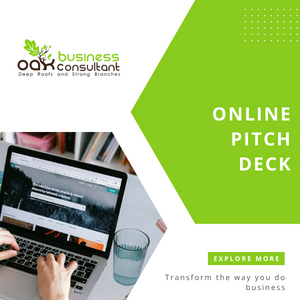
Online Pitch Deck

Pitch Deck Canva

Pitch Deck Template

Innovation & Enterprise
- For students
- For businesses
- Case studies

Entrepreneur profile: Samuel Abel, co-founder of Eden Greenspace
UCL alumnus Samuel Abel shares the ups and downs of co-founding a successful startup during and after his master’s degree, with specialist support from UCL Innovation & Enterprise.

11 June 2024
Samuel Abel (MA Philosophy 2023) and Ryan Cooper have set up Eden Greenspace, a platform which allows businesses and individuals to support environmental projects all over the world. From tree planting in Madagascar, to wildflower rewilding in the UK.
Each project has been vetted and certified to ensure it’s a project worth funding, and that every pound spent is going towards making a tangible difference to saving the planet.
Eden Greenspace is now working with several big businesses to support their sustainability efforts, as well as selling bracelets which individuals can buy to plant ten trees with each one.
Sam and Ryan have been supported to grow their startup as part of the Hatchery incubator programme at BaseKX, UCL's dedicated entrepreneurship hub in King's Cross, managed by UCL Innovation & Enterprise.
Less greenwashing, more evidence-based action
The whole idea for Eden Greenspace began taking shape in our minds during the pandemic when we could see the impact of the lockdowns on nature.
Myself and Ryan both felt strongly about the fact that nature was coming back all around us, while society was receding. But once the pandemic subsided and normal life resumed, it seemed like once again the planet was being forgotten.
Eden Greenspace was really born out of that frustration. We wanted to do something tangible to help nature come back for good.
Greenwashing is a big problem in this space, too. So it was really important to us that every project we support, from tree planting in Nepal to ocean plastic removal in the UK, has been through a rigorous selection process. As well as needing to meet one of the three planetary crises set out by the UN Environment programme (nature action, pollution action or climate action), myself and Sam visit the sites personally.
We also make sure that every pound we spend on projects can be quantified in terms of numbers of trees planted, grams of plastic removed from the ocean, or metres squared rewilded and so on. In short, we want to make real environmental action easy and accessible for ordinary people, including people who might never usually support environmental causes.
Specialist support with growing the business
Having already been part of an incubator in Durham as an undergraduate, I already knew that kind of help existed and we wanted to tap into it at UCL to develop our idea further.
So we applied for the Hatchery incubator programme, which is run by UCL Innovation & Enterprise at BaseKX, UCL’s dedicated entrepreneurship hub in King’s Cross. We had to submit a video interview and do a pitch, and we were fortunate to get accepted.
I honestly think the Hatchery is one of the best things about UCL. To have a space that you can access as a new business, where you don’t need to be hugely established yet, and there’s no equity taken, that’s really quite something.
As well as the supportive staff, you’re surrounded by all of these other driven, passionate people who are creating exciting things and solving pressing problems with their startups. There are tons of networking events, and having the relationship with UCL means it’s quite easy for us to get students in part time to help us with different aspects of the business. That kind of thing is invaluable when you don’t have much money early on.
Facing challenges head on
I think in order to start a business, you have to almost have blind faith in what you’re doing. It’s fine to have concerns, of course, but you have to 100% believe you can overcome them.
One of the most important challenges to get sorted early on is market fit. Which is really fancy jargon for making sure you’re solving a problem, or finding a better way to approach an existing solution.
And then secondly, you need to actually do it. I think people often have this idea that if you have a great idea, you’re going to be successful. But of course that’s not true. Many people have great ideas. Very few put them into practice.
Overall I think you have to get used to failing and not giving up. We’ve changed our model several times to get to where we are now.
Growing our impact and reach
For us our most obvious gauge of success is the tangible impact the projects we support are having. We’ve now planted 22,321 trees worldwide. We’ve removed 2,489kg of plastic from oceans. We’ve helped rewild over 25,000m 2 of land.
We’re also supporting several large businesses now with their sustainability work, so getting those first half dozen big clients has been a big deal for us. We’re working with estate agents Winkworths, for example, as well as a luxury interior designer called Ochre.
We’ve already achieved a lot, and there’s no way we could have got this far without the support we’ve had from UCL Innovation & Enterprise and their Hatchery incubator programme.
The next phase will be to get even more businesses on board, while also adding more projects to our site. In particular, we want to get more wetlands projects and more landscape restoration, because those are the ones that are really essential for climate mitigation.
Believing in what you’re doing
If I could sum up the feeling of running your own business, I would say it’s unlike anything else. It’s challenging in all the ways I’ve mentioned. But if done properly, growing something of your own is incredibly fulfilling. It’s about building a team towards a specific goal and creating a purpose for a group of people, in our case to help restore the planet, and that’s quite an amazing feeling.
If you’re thinking of going down this path, I think you’ve got to decide what you want out of life. Do you want a career? That suits a lot of people. Or do you want to be self determining? That’s what running your own thing is all about. But overall, you’ve got to really, really want to do whatever it is you’re doing. Not just for the money, but to realise a goal or dream, to believe in it and then make it happen.
For both myself and Ryan, our mission is a really strong driver for us. We need to make it easier for people to help the planet. That thought propels us to keep doing what we’re doing, with the support of all these great people around us at UCL, so that we can truly make this business as impactful as possible.
Find out more about:
- Entrepreneurship support for UCL students and recent graduates
- UCL Hatchery startup incubator programme
- Eden Greenspace
Entrepreneur profiles
Bella trang ngo, msc entrepreneurship graduate and co-founder of brarista.
"The business advisors have been very enthusiastic in helping us reach the next stage of the business. They’re also cheerleaders, getting us through the hard times, and helping us put things in perspective."
Sonakshi Senthil and Dr Nikhit Anilbhai, co-founders of Your Cue
“Being part of UCL’s Hatchery incubator has been a game-changer. We’ve had free desk space, been exposed to business experts and been surrounded by other people building these amazing businesses, too. That’s driven us to do a lot more and push ourselves to create the business we have today.”
Read more entrepreneur profiles .

COMMENTS
To create a nonprofit case study, you'll need access to data surrounding your chosen issue and subject. That could include both outside resources from your community, like research studies or reports from other organizations, as well as your internal program or survey data. If you don't have the necessary knowledge or experience of the ...
As an NGO, you have often come across the need to write a case study. This could be either for the purpose of documenting a report, doing a research, developing a proposal or simply because you have come across an interesting incident relating to your work and you would like to capture it in words for sharing it with others.
A Case study is a great way to demonstrate the benefits of the services offered by an NGO or a company. Not just being a testimonial, a case study is a real-life example of how one's services helped in satisfying a client's needs.
life skills and documents provided by the partner organisation for case study research. The findings of the study concludes that its high time for Governments to build partnership with NGOs and use cost-effective ways of addressing problems in education with special focus on life skills training in schools (Jagannathan, 2001).
The methodology to write a case study is given below: First Step: Identify the person, group or the entity on which you need to write a case study. Generally, you want to write a case study because you have already identified or have it in your mind the protagonist of your story. Second Step: Start researching and collecting information about ...
Youth Impact: Testing the Replicability of Proven Programs. $6.95. Publication Date: September 14, 2023. Botswana-based nonprofit organization Youth Impact was interested in replicating a well-known HIV prevention program in Kenya. Youth Impact's founders, Moitshepi Matsheng and Noam Angrist were looking to address staggeringly high rates of...
ABOUT THE CASE This case study describes a research collaboration between an academic institution and non-governmental organizations (NGOs) designed to inform programs to strengthen coordination in Bangladesh. The case describes the rationale for conducting the study, the research process, and outcomes of the research.
UN SDGs. SDG 1: No Poverty SDG 2: Zero Hunger SDG 3: Good Health and Well-Being SDG 4: Quality Education SDG 5: Gender Equality SDG 6: Clean Water and Sanitation SDG 7: Affordable and Clean Energy SDG 8: Decent Work and Economic Growth SDG 9: Industry, Innovation and Infrastructure SDG 11: Sustainable Cities and Communities SDG 12: Responsible ...
6 min read. ·. Jul 28, 2023. --. "NGO case studies illuminate the power of compassion and innovation, revealing the profound impact of dedicated organizations on the lives they touch, inspiring ...
In advance of the workshop, NGO participants were asked to submit a case study and associated poster describing a program or initiative that aimed to improve the status of Maternal Newborn and Child Health (MNCH) and specifically immunization. The case studies featured many key aspects of their projects, from conception to
ways the NGO and program participants influenced one another. The study's conceptual framework drew from Vella's principles of effective adult learning and global feminist theory. Using a qualitative case study approach, the single-case design focused on an international NGO operating in a West African country. In its tenth year of operations,
Many scholars express scepticism about funding on NGO goals, while others encourage a nuanced critique. This 18-month ethnographic study of two NGOs in Bangalore, India, explores NGO workers navigating the acceptance of funding while maintaining their original missions. When one NGO failed to uphold this goal, staff members created their own NGO.
However, a basic template of a case study is useful for NGOs which they can work on further to present their point of view. Below. Link to the Main Page Case studies can be written in various styles and expert writers can always come out with new ideas on the format of a case study. However, a basic template of a case study is useful for NGOs ...
Published Aug 23, 2023. + Follow. 🔍 Case Study: The Transformation of NGO Operations with 'Impact ERP'. In the intricate landscape of NGOs, where every effort counts, operational efficiency is ...
WITNESS. To distribute compelling content and streamline day-to-day operations, WITNESS relies on no-charge tools from Google. Nonprofit success stories. Discover how organizations around the ...
Effective programmes introduced by NGOs in developing countries have the potential to benefit a large number of people if they are scaled up, but instances of successful scaling-up are relatively rare. This paper uses a case study of an Indian educational NGO that has scaled up rapidly and effectively in order to explore the reasons for choice of scaling-up strategy, the particular barriers to ...
Case Study: Local NGO Development. The recent focus on local systems strengthening has created an opportunity to witness some encouraging results, especially when it comes to a variety of approaches for increasing local leadership of development activities. LINC has been working with local and international NGOs and donors on a number of new ...
It is based on qualitative study based on an NGO as case study. A number of qualitative data collection methods such as Focus Group Discussion, In-depth Case Study and Documentation Survey. According to the study findings, it reveals that the NGOs` partnership is important for social development but ways and techniques of partnership as well as ...
Strength in Numbers: A Review of NGO Coordination in the Field, Case Study: Occupied Palestinian Territories 1967-2010 Humanitarian coordination. International organisations have been providing relief in the occupied Palestinian Territories (oPt) since the war in 1967. Due to the occupation, intermittent conflict and general economic decline ...
With this case study, you would also like to share it with other organizations for replicating the project. A case study is an analysis of problem or a success story being faced by an individual or a group of persons or a community, events, projects, government policies, institutions etc. The problem or the success can be small that is area ...
Collaboration for social change: a case study of NGOs participating in the Violence Prevention Forum Improved relations have changed how NGOs view their role in reducing violence and linking with government policy. ... (NGOs), and how it has empowered NGOs to use research knowledge and to engage with and inform policy. ...
Link to the Main Page Below are the important reasons listed out for writing a case study especially in context of NGOs: A case study gives an interesting overview of the existing problem or a success story. It attracts the attention of the lay person who will be able to understand the problem or success
This Case Study for NGO is about - Hub Care that is an Australian-based NGO, that provides a unique and holistic service system to Government for sharing information across Social Service ecosystems, leading to improved outcomes for citizen engagement, increased productivity, compliance for services, and improved government oversight.
Bella Trang Ngo, MSc Entrepreneurship graduate and co-founder of Brarista "The business advisors have been very enthusiastic in helping us reach the next stage of the business. They're also cheerleaders, getting us through the hard times, and helping us put things in perspective."